How to Grow Cabbage for Beginners
This is a guide that will walk you through How to Grow Cabbage for Beginners. Whether you have grown it before and are just looking for a few tips or you have yet to try your hand at growing cabbage, this guide will get you on your way to another great vegetable to add to your gardening 101 library.
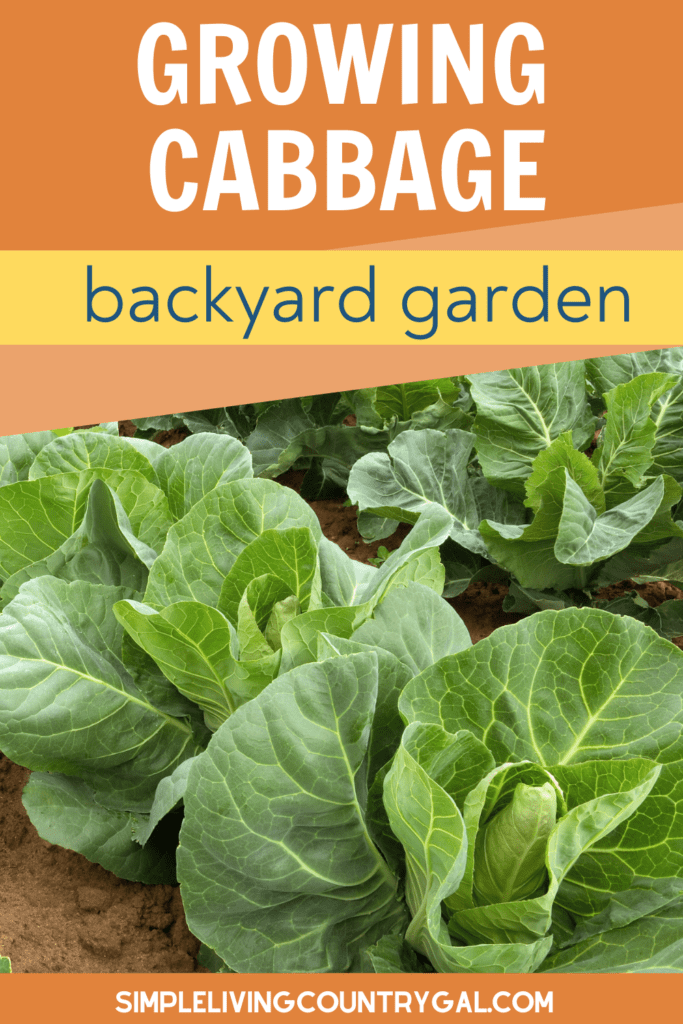
When I was younger, I was not a big fan of cabbage. To be honest, I think I hated it.
My mom used to make stuffed cabbage rolls and the smell was something most kids probably are not a fan of.
Today, however, that has completely changed. Funny how our tastes evolve as we get older. Coleslaw, cabbage soup, and yes even those stuffed cabbage rolls from my childhood are some of my very favorite dishes today.
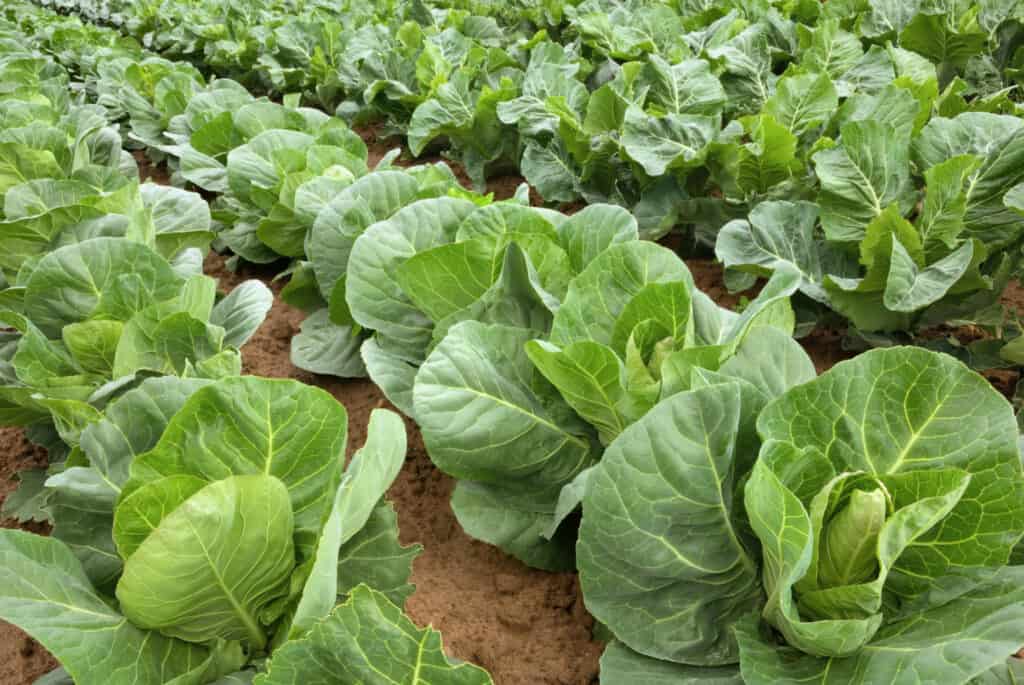
Cabbage is a cool-season vegetable, grown best in the spring and fall. It’s a hardy, leafy green that can be enjoyed both raw and cooked.
There are some great reasons to add cabbage to your garden, and your dinner table, including that they last longer than most vegetables do when stored in the refrigerator. Add to that the fact that they are crammed full of nutrients and how very versatile they are and you just might have a perfect backyard garden addition.
Cabbage can be added to soups and salads or shredded for coleslaw or added to stir-fry. Cabbage can be roasted, steamed, or grilled. It’s also great for weight loss, which is a delicious added bonus!
Cabbage can, however, be a bit challenging for a beginner gardener especially if you don’t have the right growing conditions. It will only grow in cool temperatures and it can be very attractive to garden pests, welcoming them into your garden. A crop rotation every few years will help avoid some soil borne diseases, but you’ll still need to watch for pests. Read on to see how to manage them.
How to Grow Cabbage for Beginners
Before we talk about how to plant, tend, and harvest cabbage, let’s go over a few other things first. There are 3 main types of cabbage to choose from including:
- Head Cabbage – This variety has green or red leaves and forms into a tight round head. There are early and mid-season varieties that grow smaller, but faster. Late or long-season varieties will grow larger and they will store better.
- Oriental Cabbage – This variety grows into an oblong shape resembling celery with both short and taller varieties. Some varieties of Oriental cabbage to try are Napa and Bok Choy.
- Savoy Cabbage – This variety has long, crinkled leaves that form a looser head than head cabbage varieties. It has a milder, sweeter taste than a head cabbage with a more delicate texture.
Next up are the different varieties of cabbage including:
- Primo or Stonehead for an early harvest.
- Golden Acre and Quick Start for quickly maturing, 3-pound heads.
- Alcosa (early variety) and Wirose (late variety that overwinters) are in the Savoy cabbage family.
- Early Jersey Wakefield will resist splitting and is an heirloom variety.
- Gonzales produces small, tennis ball-sized heads and is perfect for small gardens.
- Blue Vantage and Cheers are disease resistant.
- Integro, Ruby Perfection (red), and Li Ren Choy (baby bok choy) are good fall varieties.
What You Need to Grow Cabbage
As I mentioned earlier, cabbage prefers cooler temperatures. This means it does not grow well in the heavy dry heat of summer. Because of this, you’ll need to plan your planting season during the colder months of the year. This is actually good news, as planting and harvesting early will give you more garden space for summer vegetables.
You’ll also need nutrient-rich, well-draining soil so you may need to prepare the soil before planting.
When to Plant Cabbage
If you’re planting seeds indoors, the best time is in mid-to late February. You can then plan on transplanting your seedlings about 4 weeks later. This is usually inthe latter part of March, before the last spring frost.
For a fall harvest, you can direct sow the seeds outdoors in mid- to late summer. You can also start seeds indoors and transplant them once they are sturdy seedlings. If you live in an area that is particularly dry and hot, it’s best to hold off planting until late summer to make sure the seedlings don’t dry out in the summer heat.
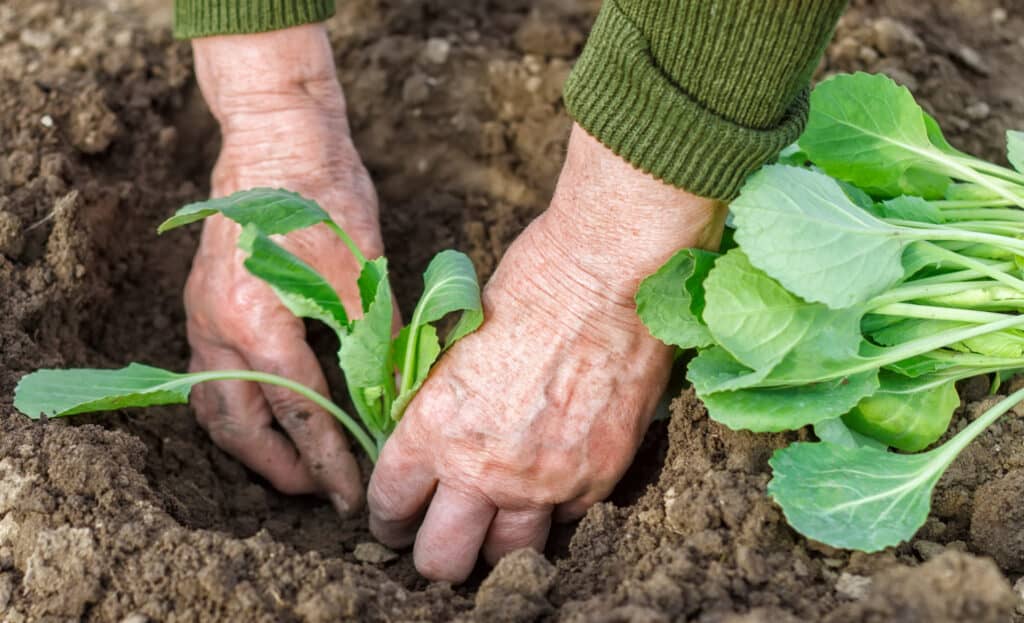
How to Plant Cabbage
Planting cabbage will take a little pre-planning. You’ll need to know where to plant first so that you can ensure your plants will receive enough sunlight. You will also want to be sure you have enough time to prepare the soil. Cabbage is a heavy feeder and will soak up all the nutrients in the soil quickly so you’ll want to mix in aged manure or compost before planting to make sure the cabbage heads have plenty of nutrients to grow.
If you’re starting seedlings indoors, prepare the seeds by sowing them about a ¼ inch deep 6 to 8 weeks before the last frost of the spring. Before planting you’ll need to harden off the plants over the course of about a week.
To harden off the plants, you can use a sheltered spot outdoors, an unheated greenhouse, or even a cold frame. Be sure to protect your seedlings from damaging winds. You can do this by keeping a cluster of pots in a bucket or large box then placing it in an open garage or another area that is partially sheltered from the winds. Be sure to keep your plants up off the ground to protect them from getting knocked over by birds or easily accessed by slugs.
SLCG Pro Tip: I like to keep our seedlings on a cart so I can easily move it in and out as I am preparing them for planting. If you don’t have a cart you can purchase a garden wagon that you can use throughout your growing season for different chores and projects.
Start the hardening process on a non-windy, slightly overcast day when temperatures are steady and the sun isn’t too bright. Water the plants before taking them outside then place them in your sheltered area for about 2 hours on the first day.
Continue to take them out to the sheltered area daily, leaving them for an additional 2 hours each day. After a day or two, place them where they can get an hour of direct sunlight in the morning. Gradually increase their outdoor time and sunlight over a week or two before planting. If there’s no danger of frost, you can leave them out overnight.
Once the plants have been hardened off, you’re ready to plant. It is best to plant on a cloudy, overcast afternoon 2 to 3 weeks before the last frost of spring. Plant the seedlings 12 to 24 inches apart in rows, depending on the size of cabbage head you desire. The closer you plant, the smaller the heads will grow.
When the seedlings are about 5 to 6 inches tall, thin the plants to leave the desired spacing. If you’d like, you can replant the thinned seedlings elsewhere.
Next, you will want to add a layer of mulch over the garden area being sure not to cover the plants. The mulch will help the soil retain moisture and keep the soil temperature regulated. Soil temperature should be 60 to 65° F for optimal growth. Seedlings exposed to temperatures below 45° for an extended period may bolt or form loose heads. If cold weather is expected, cover the plants.
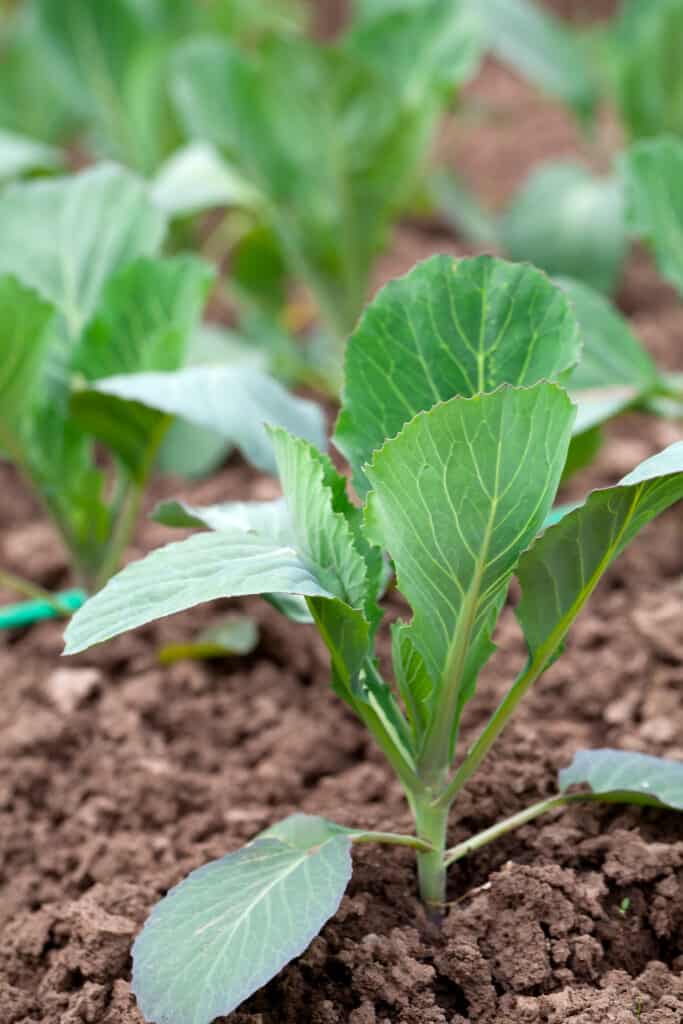
How Many Cabbages to Plant
For a healthy harvest, you’ll want to plant 3 to 5 plants per person in your household.
How Long Does Cabbage Take to Grow?
Most varieties take about 70 days to mature when seedlings are planted. Depending on the variety, you can expect them to take 80-180 from seeds or 60-105 days from transplants. They’ll be ready to harvest when the heads reach the desired size and are firm. If they’re left on the stem too long, the heads may split so keep an eye on them as they near maturity.
Temperature
Cabbage prefers cooler temperatures and does well between 55° and 75° F. Check the soil temperature as well, it should be between 60° and 65° F ideally.
Sun
While cabbage does prefer cooler temperatures, it is a sun-loving plant. They’ll need plenty of sunlight, about 6 to 8 hours of direct sunlight daily.
Soil
The soil will need to be rich in organic matter that is well-draining. If water sits and pools near the roots, it will damage the plants. Prepare your planting beds by adding in 2 to 3 inches of aged compost or commercial organic planting mix and turning it under to 12 inches deep.
Cabbage grows best in soil with a pH between 6.5 and 6.8. If clubroot disease is a problem, adjust the pH to 7.0 or slightly higher by adding lime.
In areas where the soil is sandy or there are heavy rains, supplement the soil with nitrogen. Adding nitrogen-rich blood meal or cottonseed meal to the soil before planting will encourage leafy growth.
HIRALIY 50ft Drip Irrigation Kit Plant Watering System 8x5mm Blank Distribution Tubing DIY Automatic Irrigation Equipment Set for Garden Greenhouse Flower Bed Patio Lawn




Water
Cabbage plants need plenty of water, about 2 inches per square foot per week. Make sure you give the soil a good soaking a few times a week.
Fertilizing
Fertilize the plants about 2 weeks after transplanting with a balance 10-10-10 fertilizer to help them flourish. Three weeks later, add a nitrogen-rich fertilizer. Cabbage needs plenty of nitrogen in the early stages of growth.
Spacing
If planting seeds, space them about 1 inch apart then thin the plants to 18 to 24 inches apart once seedlings sprout. Seedlings started indoors should be spaced 18 to 24 inches apart in rows that are 24 to 36 inches apart. The spacing will determine the size of the cabbage head so space closer together for smaller heads and further apart for larger ones.
Depth
Cabbage seeds should be planted about ½ inch deep when planted directly outdoors, a ¼ inch deep when started indoors. Transplants should have 4 or 5 true leaves before planting. If the plant is leggy or the stems are crooked, plant deeper, 1-2 inches, to just below the top two sets of leaves.
Growing Tips for Cabbage
- Rotate your cabbage crop annually to avoid a build-up of soil-borne diseases. Don’t plant in the same area for at least 3 years.
- To reduce pests, plant onions, radishes, and nasturtiums near cabbage plants.
- Use row covers when the plants are young to protect them.
- Place a protective collar around young plants using newspaper strips to deter cutworms.
- Check the plants for caterpillars in the morning and at night and hand pick them off.
- Spray aphids with water or treat the plants with insecticidal soap.
- After harvesting, you can add healthy plants and roots to your compost pile, but destroy any plants that have been infected.
- To prevent soilborne diseases from attacking your garden, remove the entire cabbage plants, including the root system, from the ground.
- Uneven watering can produce stunted and cracked heads. Water evenly and lay a heavy layer of mulch to keep the soil cool and help it retain moisture.
- Cabbage heads will split when they are grown too fast or retain too much water. To prevent this from happening, a week before harvesting twist the heads a quarter turn to separate some of the roots and interrupt the water uptake.
- Cabbage plants are heavy feeders and deplete the soils nutrients quickly. Feed young plants with fish emulsion and seaweed solution 2 weeks after planting and again 3 weeks later then feed monthly throughout the growing season.
- Cabbage can tolerate light freezes and the flavor improves with cold weather but harvest before the temperatures get too warm.
How to Harvest Cabbage
When the cabbage heads reach the desired size and are firm, you’re ready to harvest. Most varieties will produce 1-to-3-pound heads.
To harvest, cut the cabbage head at its base using a sharp knife. Remove any yellow leaves but keep any loose green leaves, they’ll protect the head during storage. Immediately bring the harvested cabbage heads indoors or place them in a shady spot away from sunlight.
If you’d like to get 2 crops, cut the cabbage head out of the plant, leaving the outer leaves and the roots in the garden. The plant will form new heads. Pinch those off until only 3 or 4 remain then harvest them when they’re about the size of a tennis ball, they’ll be perfect for salads.
After harvesting, remove the entire stem and root system to prevent disease. Be sure that you only compost healthy plants and destroy any that have pest infestations.
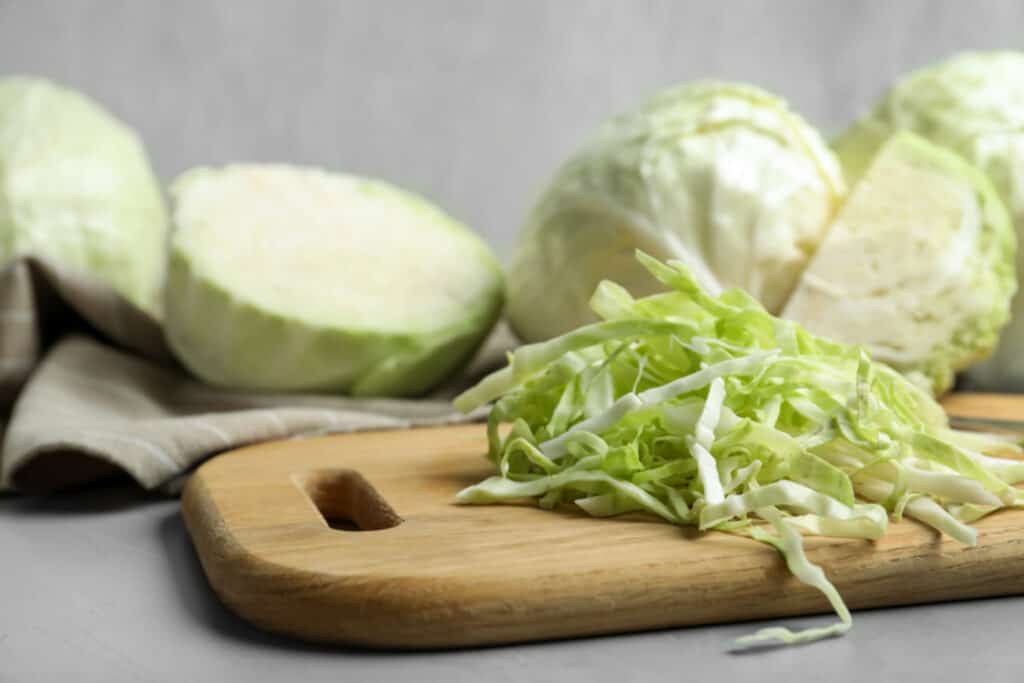
How to Store Cabbage
Cabbage can be stored in the refrigerator for up to 2 weeks. Make sure it’s completely dry and wrap it lightly in plastic wrap before storing.
You can also remove loose leaves, wrap them in a damp paper towel, and place them in a plastic storage bag in the refrigerator, they’ll last about 3 to 4 weeks.
Cabbage can also be stored in proper root cellar conditions for up to 3 months.
What Diseases and Pests to Watch For
There are a few pests and diseases to keep an eye out for including:
- Aphids
- Black Rot
- Cabbage Loopers
- Cabbage Root Maggots
- Cabbageworms
- Clubroot
- Flea Beetles
- Downey Mildew
- Slugs and Snails
- Stinkbugs
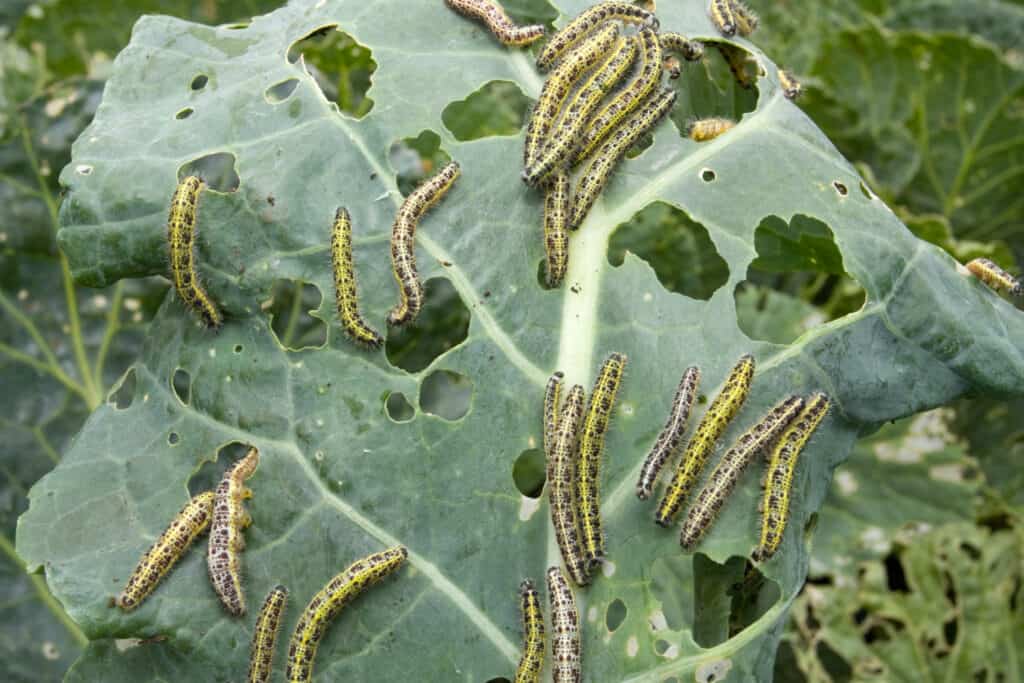
Keep an eye on the leaves and if you notice any damage, treat with insecticidal soap.
Cabbage can be a challenging vegetable to grow, but it’s so worth all the effort in the end. You may only produce a few heads the first season as you learn how to grow it, but your crops will improve every year and you’ll enjoy a bigger harvest.
There are so many ways you can use cabbage and so many health benefits that it offers, it’s worth making space in your garden for it.







Excellent advice! You’ve given me courage to try planting it again!
Great, let me know how it goes!